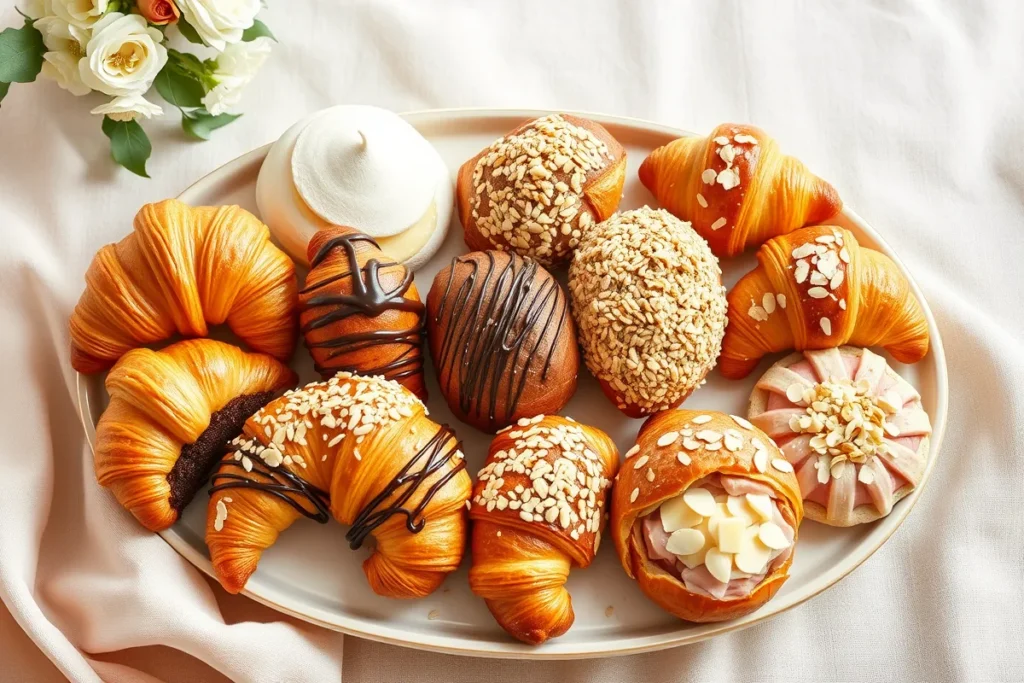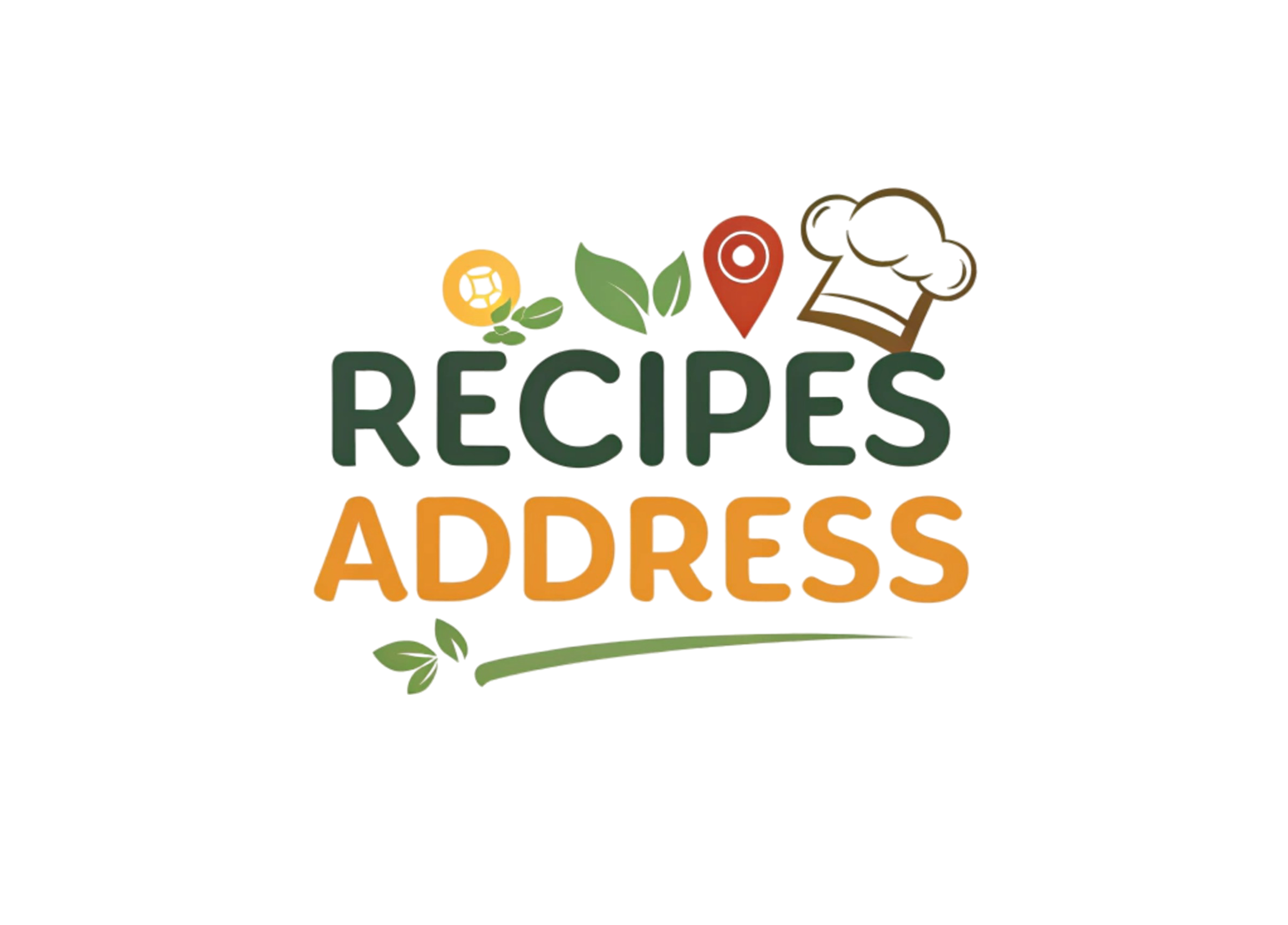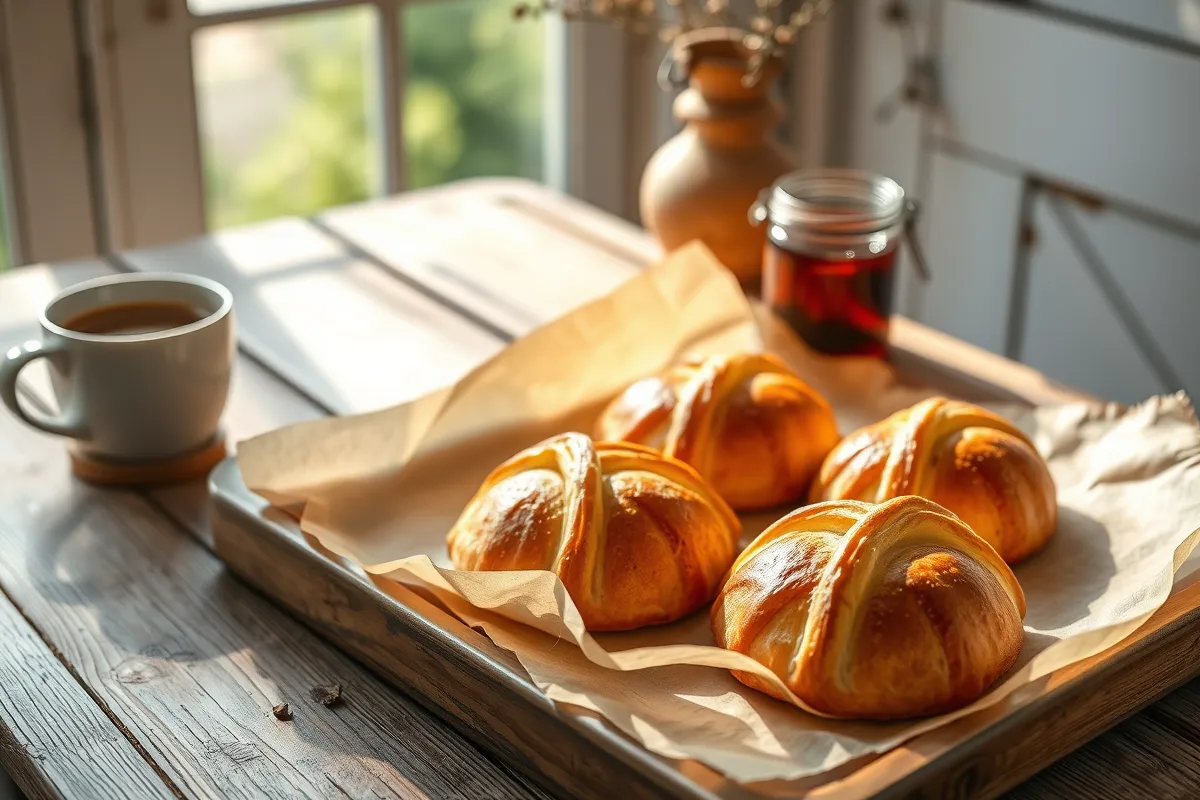Introduction
Gipfeli, the Swiss cousin of the French croissant, holds a special place in European pastry traditions. Unlike croissants, Gipfeli is known for its slightly denser texture and unique flavor. These crescent-shaped treats are a staple in Swiss bakeries, loved for their versatility as both a breakfast option and a delightful snack.
What sets the Gipfeli apart is its ability to combine the buttery richness of croissants with a heartier bite. The dough is crafted with care, often including milk and a touch of sugar to create a subtle sweetness. Whether enjoyed plain, filled with chocolate, or stuffed with almond paste, Gipfeli offers something for everyone.
Swiss pastry culture places great emphasis on balance, and Gipfeli exemplifies this perfectly. With their golden crust and soft interior, they pair beautifully with a morning coffee or an afternoon tea. Even though Gipfeli shares similarities with croissants, it is less flaky and more structured, making it easier to handle and enjoy without losing crumbs along the way.
If you’ve ever wanted to bring the charm of a Swiss bakery to your home, mastering the Gipfeli recipe is an excellent way to start. Follow along as we uncover the history, ingredients, and step-by-step process for creating these iconic pastries.
History and Origin of Gipfeli Recipe
Gipfeli, a beloved staple in Swiss cuisine, has a rich history that reflects the cultural diversity of Switzerland. The name “Gipfeli” stems from the German word Gipfel, meaning “peak” or “summit,” a nod to its crescent shape resembling a mountain peak. This pastry has long been a favorite in Switzerland, offering a unique take on the classic French croissant.
While croissants are typically associated with France, the roots of crescent-shaped pastries can be traced back to Austria in the 17th century. Over time, these pastries made their way to Switzerland, where they were adapted to suit local tastes and ingredients. The Swiss version, Gipfeli, features a denser dough and less flakiness compared to the French croissant. This adaptation has become a defining characteristic, setting Gipfeli apart from its French counterpart.
Each region in Switzerland has its own variation of Gipfeli. Some are sweet, brushed with a sugary glaze or filled with almond paste, while others are savory, stuffed with cheese or ham. The versatility of Gipfeli has helped it remain a timeless favorite, loved by people of all ages.
Swiss bakeries and cafés often serve Gipfeli as a breakfast option, pairing it with coffee or tea. It is also a popular choice for on-the-go snacks, thanks to its sturdier texture. Over the years, Gipfeli has become a symbol of Swiss comfort food, representing a blend of tradition and innovation.
Understanding its history enriches the experience of making and enjoying Gipfeli. By mastering this pastry, you can connect with Swiss culture while delighting in its distinctive flavors and textures.
Understanding the Ingredients
Creating a perfect Gipfeli begins with understanding its key ingredients. Each component plays a vital role in achieving the pastry’s characteristic flavor and texture. Unlike croissants, Gipfeli relies on a slightly denser dough, making ingredient quality crucial to its success.
Essential Ingredients for Gipfeli Recipe
- Flour
High-quality all-purpose flour or bread flour is ideal for Gipfeli. The protein content in bread flour provides the necessary structure, while all-purpose flour offers a softer texture. A balanced combination of both can yield excellent results. - Butter
Butter is the star ingredient, responsible for the Gipfeli’s rich flavor. Always use unsalted, high-fat European-style butter for optimal results. It’s critical to keep the butter cold during the preparation to achieve those beautiful layers. - Yeast
Active dry yeast or instant yeast is used to help the dough rise. Properly activating the yeast ensures a light and airy interior, even with the denser texture of Gipfeli. - Milk
Whole milk adds richness and contributes to the dough’s pliability. Some recipes substitute water for a lighter dough, but milk creates a more luxurious result. - Sugar
A small amount of sugar provides subtle sweetness and enhances browning during baking. - Salt
Salt balances the flavors and strengthens the dough’s structure. - Egg
Eggs are often used in two ways: to enrich the dough and as an egg wash for a glossy, golden finish.
Optional Fillings
Gipfeli can be customized with various fillings to suit your preferences. Sweet options include:
- Chocolate
Small chocolate bars or chips folded into the dough create a delightful surprise. - Almond Paste
A sweet and nutty filling that pairs perfectly with the buttery dough.
By selecting fresh, high-quality ingredients, you can ensure that your Gipfeli will be flavorful and satisfying. Whether you stick to the classic recipe or experiment with fillings, the ingredients you choose will significantly impact the final result.
Equipment Needed when Making the Gipfeli Recipe
To successfully make Gipfeli at home, having the right tools on hand is essential. While the recipe itself is straightforward, using proper equipment ensures consistent results and makes the process smoother.
Must-Have Tools
- Mixing Bowls
Various sizes of mixing bowls are necessary for combining ingredients, proofing the dough, and organizing your workspace. - Rolling Pin
A sturdy rolling pin is essential for rolling out the dough and achieving uniform layers. A longer, heavier rolling pin works best for even pressure. - Baking Sheet
Use a large, flat baking sheet to accommodate the Gipfeli without overcrowding. Lining the sheet with parchment paper ensures easy cleanup and prevents sticking. - Parchment Paper
Parchment paper is crucial for lining your baking sheet, as it allows the Gipfeli to bake evenly and reduces the risk of burning the bottoms. - Pastry Brush
Applying an egg wash with a pastry brush gives Gipfeli their signature golden finish. Look for a brush with soft bristles for an even application. - Sharp Knife or Pastry Cutter
Precision is key when shaping Gipfeli. A sharp knife or pastry cutter ensures clean cuts and consistent sizes. - Measuring Cups and Spoons
Accurate measurements are critical for baking success. Invest in reliable measuring tools to ensure consistency. - Kitchen Scale
For precise ingredient measurements, especially when working with flour and butter, a kitchen scale is invaluable.
Optional Tools
- Dough Scraper
This tool helps manage and shape the dough during the folding and cutting process. - Cooling Rack
Allowing your Gipfeli to cool on a rack helps maintain their texture by preventing moisture buildup on the bottom.
Having these tools ready before you start will streamline the process and help you focus on perfecting your technique. While some tools are optional, investing in quality equipment can make all the difference when crafting these delicate pastries.
Step-by-Step Preparation Guide of The Gipfeli Recipe
Making Gipfeli requires patience and precision, but the results are worth the effort. Follow these detailed steps to craft perfect Swiss Gipfeli at home.

Preparing the Dough
Start by activating the yeast. Warm the milk to about 100°F (37°C) and dissolve the sugar in it. Sprinkle the yeast over the milk and let it sit for 5–10 minutes until frothy. This step ensures that the yeast is active and ready to leaven the dough.
In a large mixing bowl, combine the flour and salt. Gradually add the milk mixture, mixing until a shaggy dough forms. Incorporate softened butter and knead the dough on a lightly floured surface for 8–10 minutes until smooth and elastic. This step is crucial for developing gluten, which gives the Gipfeli structure.
First Proofing
Transfer the dough to a lightly greased bowl, cover it with a damp cloth, and let it rise in a warm place for about 1–1.5 hours or until it doubles in size. This proofing step ensures the dough is light and airy.
Laminating the Dough
Laminating the dough involves incorporating butter to create flaky layers. Begin by flattening the cold butter into a thin rectangle between two sheets of parchment paper. Chill it until firm but pliable.
Roll the proofed dough into a rectangle large enough to encase the butter. Place the butter in the center, fold the dough over it, and seal the edges. Roll the dough into a larger rectangle, then fold it into thirds like a letter. This is the first “turn.”
Chill the dough for 20–30 minutes, then repeat the rolling and folding process two more times, chilling between each turn. These layers will create the characteristic texture of Gipfeli.
Shaping the Gipfeli
After laminating, roll the dough into a large rectangle about ¼-inch thick. Cut it into triangles with a sharp knife or pastry cutter. Starting from the wide end, roll each triangle tightly toward the tip to form a crescent shape. Place the shaped Gipfeli on a parchment-lined baking sheet, with the tip tucked underneath to maintain the shape during baking.
Second Proofing
Allow the shaped Gipfeli to rise for 30–40 minutes in a warm, draft-free area. This second proofing step enhances their fluffiness and ensures they bake evenly.
Baking
Preheat your oven to 375°F (190°C). Lightly brush the Gipfeli with an egg wash made by whisking one egg with a tablespoon of water. This gives them their signature golden sheen.
Bake the Gipfeli for 18–22 minutes or until golden brown and fragrant. Remove them from the oven and let them cool slightly on a wire rack before serving.
By following these steps carefully, you’ll achieve authentic Gipfeli with a rich, buttery flavor and a satisfying texture.
Tips and Tricks for Perfect Gipfeli
Making Gipfeli may seem complex, but with a few practical tips, you can achieve professional-quality results. These pointers will help you troubleshoot common challenges and refine your technique.
Ensuring a Flaky Texture
To create the iconic layers in Gipfeli, it’s essential to keep the butter cold throughout the laminating process. This will help you perfect you Gipfeli Recipe. If the butter starts to melt while rolling and folding the dough, the layers may fuse together, resulting in a dense pastry. Work quickly and chill the dough between turns to maintain the integrity of the layers.
When rolling out the dough, apply even pressure to avoid overly thin or thick areas. Consistent thickness ensures uniform baking and appearance.
Common Mistakes to Avoid
- Skipping Chilling Periods: Laminating requires patience. Skipping the resting periods between folds will compromise the dough’s texture and make it harder to work with.
- Overproofing: Allowing the dough to rise for too long can result in a sour flavor or an overly soft structure. Stick to recommended proofing times.
- Uneven Shaping: Triangles of varying sizes will bake unevenly. Use a ruler or guide to ensure consistent shapes when cutting the dough.
Adjustments for Dietary Restrictions
Gipfeli can be adapted to suit dietary needs. For gluten-free Gipfeli, use a high-quality gluten-free flour blend with xanthan gum to mimic the elasticity of wheat flour. While the texture may differ slightly, the flavor can still shine through.
For dairy-free Gipfeli, substitute butter with a plant-based alternative that has a high fat content, and use non-dairy milk for the dough. Be mindful of the fat-to-water ratio in your substitutes to maintain the desired texture.
You can make these changements to your Gipfeli Recipe to suit your preferences.
Enhancing Flavor
To elevate the flavor of your Gipfeli, consider incorporating subtle additions to the dough, such as a pinch of cardamom or vanilla extract. These small tweaks can add a unique twist to the classic recipe without overpowering its simplicity.
By following these tips, you can refine your technique and confidently bake Gipfeli that rival those found in Swiss bakeries.
Frequently Asked Questions about Gipfeli Recipe
What is the difference between a croissant and a Gipfeli?
While both croissants and Gipfeli are crescent-shaped pastries, they differ in texture and flavor. Croissants are known for their light, flaky layers, achieved through a delicate lamination process. Gipfeli, on the other hand, have a denser texture and are less buttery, making them sturdier and easier to handle. Additionally, Gipfeli often feature slightly sweet or savory variations that are distinct to Swiss cuisine.
What is a Mandelgipfel?
A Mandelgipfel is a variation of Gipfeli that incorporates almonds into the recipe. This can include an almond filling made from almond paste or a topping of sliced almonds sprinkled over the pastry before baking. Mandelgipfel are popular in Swiss bakeries and are celebrated for their nutty, sweet flavor.
What are suitable fillings for Gipfeli?
Gipfeli can be filled with a variety of ingredients, both sweet and savory. Popular sweet fillings include chocolate, almond paste, and fruit preserves. For savory options, ham and cheese, spinach and feta, or herb-infused mixtures work beautifully. The choice of filling depends on personal taste and occasion.
For more Breakfast Recipes, Make sure to check Our Diversified Breakfast Category.
Conclusion
Mastering the art of making Gipfeli is a rewarding culinary journey. These Swiss pastries, with their unique blend of buttery richness and slightly denser texture, offer a delightful alternative to the classic croissant. Whether enjoyed plain or filled with sweet or savory ingredients, Gipfeli bring a touch of Swiss tradition to any table.
By understanding the history, selecting high-quality ingredients, and following a precise preparation process, you can create authentic Gipfeli in your own kitchen. The variations, from chocolate-filled to Mandelgipfel, allow for endless creativity and personalization, ensuring there’s a version for everyone to enjoy.
Baking Gipfeli is more than just creating a pastry—it’s a way to connect with the rich culinary heritage of Switzerland. Whether you’re savoring them with coffee in the morning or sharing them at a special gathering, Gipfeli are sure to leave a lasting impression.
Now that you have a complete guide, it’s time to roll up your sleeves and start baking. Let the aroma of freshly baked Gipfeli fill your home and transport you to the cozy charm of a Swiss bakery.

